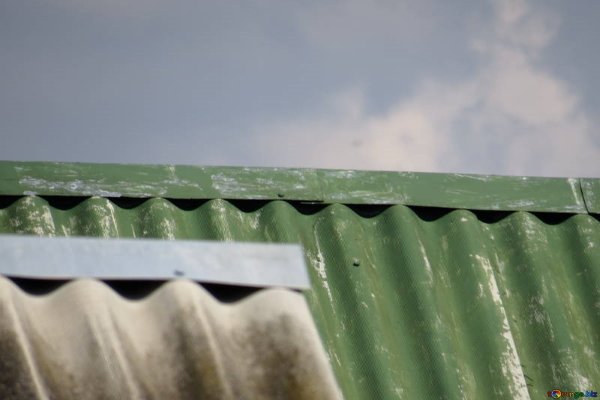
DIY roofing is definitely your thing for your Denver CO home. You've been doing it splendidly so far and the results are rewarding each weekend. You've just finished putting on the roof sheathes. Next, you've rolled the underlayment nicely. Now, you're just having some problems with where to screw down corrugated metal roofing.
Truth be told, it's as simple as using a screw drill bit to drive home the screw and keep your roof in place. However, it isn't that easy. Corrugated metal roof's exposed fasteners are often the first to introduce leaks into your underlayment and through your attic. Unfortunately, all corrugated metal roofs will introduce this problem sooner or later.
So, how can you deal with it? Where to screw down corrugated metal roofing while making sure no leaks ever happen? The question isn't where, but what and how to screw down corrugated metal roofing. We'll answer this along with other common corrugated metal roofing questions below.
Most manufacturers drill holes through the corrugated metal roofing sheets. These are where to screw down corrugated metal roofing. However, you have to ensure the rubber washers have enough space to move around.
Metal roofing materials including galvanized steel need enough screw space to expand and contract during cold and hot weathers in Denver CO.
To make sure you have your corrugated roofing properly spaced, Allsteel Metal Roofing has a great guide on measurements in case your corrugated roof didn't come with pre-drilled screw holes.
Allsteel carries screws in 2 different lengths: 1½ inch and 2 inch. The 1½ inch variety is the best all-purpose size. The table below can be used to figure approximate quantities of screws for various purlin spacings and sizes of roofs. Screws are available in quantities of 250.
SCREW (purlin) SPACING
linear ft of panels
in your order 12 inch 18 inch 24 inch
50 270 180 135
100 540 360 270
200 1080 720 540
300 1620 1080 810
400 2160 1440 1080
500 2700 1800 1350
600 3240 2160 1620
700 3780 2520 1890
800 4320 2880 2160
900 4860 3240 2430
1000 5400 3600 2700
1100 5940 3960 2970
1200 6480 4320 3240
While your manufacturer will include a well-to-do screw with a rubber washer that prevents leaks from heading inside your home, you might find some better selections with long term performance. True enough, no roofing material can last forever, but some can last longer than you expect.
If you're wondering about the best types of roofs you can use, take a look at RoofThings' detailed list on the best type of roofing screws you can use. Read more about them below.
Use the right fastener. Screws and fasteners have metal-to-wood and metal-to-metal applications.
Use a fastener that has a large washer.
Hi-Lo threaded screws are used in metal-to-wood applications. (Tek screws are used in metal-to-metal applications. Stainless steel screws should be used when screwing down aluminum metal roofs. )
Protect against corrosion and rust by using mechanically galvanized fasteners.
Variety and choice matter.
Instead of carbon steel screws use stainless steel or zinc aluminum cap screws.
Look for and use fasteners with a strong V-neck head to prevent product breakage while on the job site.
Coordinate color of roofing screw with roof panel color.
If you needed the screws yesterday look for quick ship options.
Use fasteners from a reliable company. (Source)
Both standing seam and corrugated metal roofs have their differences. For one, standing seam metal have concealed fasteners, which reduce the likelihood of leaks due to damaged screws. Unfortunately, they have their respective problems homeowners need to deal with in the future.
Sheffield Metals has a great comparison between the two variants of metal roofs. You can read more about them below.
Advantages of Exposed Fastener Metal Roofing
LESS EXPENSIVE – One of the most significant benefits to choosing exposed fastener metal roofing is that it’s less expensive, especially when compared to standing seam systems. There are many reasons for the lower price, including:
Wider panels (up to 36”)
Fewer metal panels need to be purchased.
Less labor is needed because the wider panels cover the roof faster.
Thinner gauge panels
Exposed fastener systems generally use 29 to 26 gauge metal, which is thinner and cheaper.
Lower quality paint systems
Polyesters and silicone-modified polyester (SMP) paint systems are popular choices for exposed fastener because they’re less expensive than the polyvinylidene fluoride (PVDF) paints typically used on standing seam systems.
Less accessories purchase
Exposed fastener systems are directly fastened down to the structure through the metal, so there’s not a necessity to buy any kinds of clips. This can save on costs for the buyer.
Exposed fastener systems usually use less accessories and different flashing products, like foam closures, to install the roof system. Again, this cuts down on costs and speeds up the installation. (Continued)
However, the installation of metal roofs spells the difference when it comes to prolonging its lifespan and dependability. You'll need professional roofers from Denver CO with in-depth metal roofing experience to help you. If you have yet to find them, you can contact us today at Roper Roofing to help you. Contact us today!